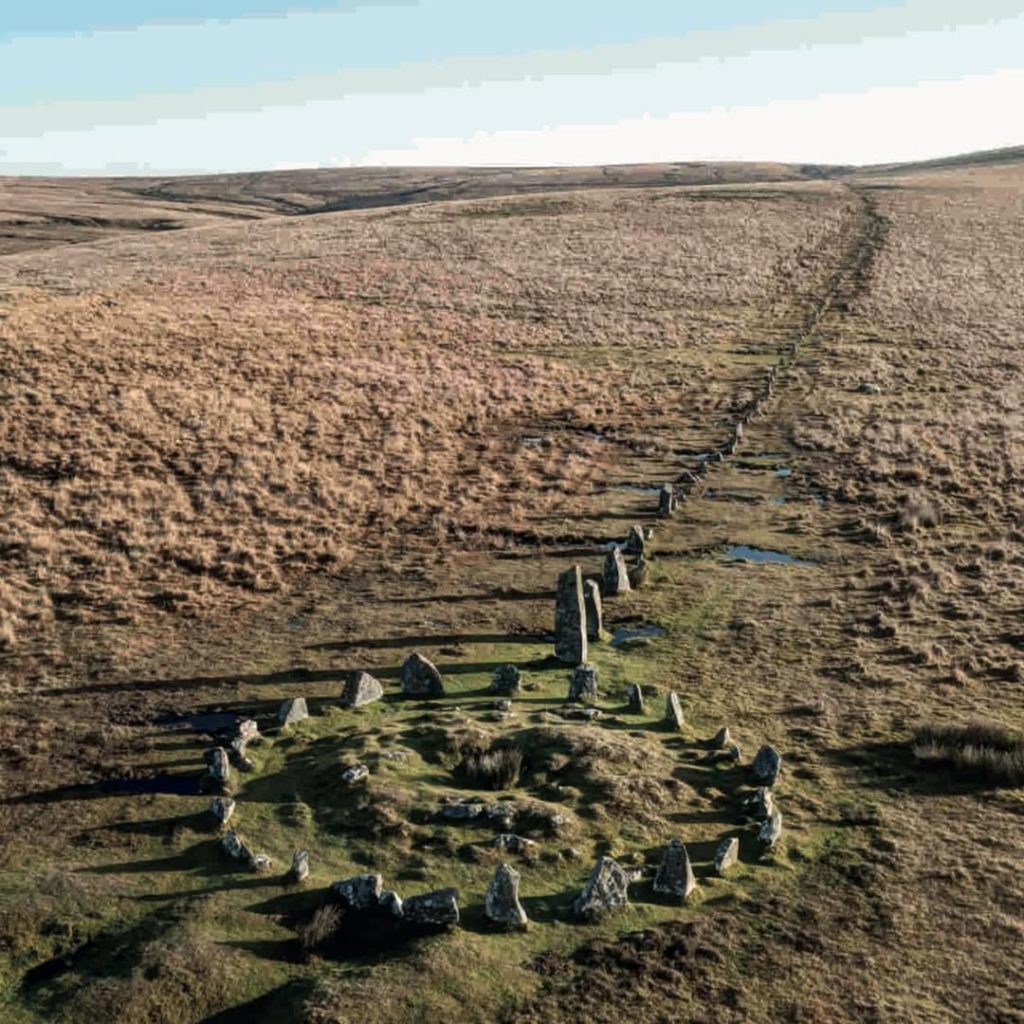Nestled in the windswept landscapes of Dartmoor, Devon, Hingston Hill Cairn and Stone Row stands as a striking relic of the Bronze Age—a powerful testament to the ingenuity, spirituality, and cosmological awareness of early human civilization. Estimated to be over 4,000 years old, this ancient site continues to captivate archaeologists, historians, and curious travelers with its carefully arranged structures and mysterious origins. More than just a pile of rocks on a hilltop, Hingston Hill is a window into the distant past, offering clues to how our ancestors lived, worshipped, and viewed the world around them.

At the heart of this ancient site lies a circular mound of stones known as a cairn. Archaeological evidence suggests that this cairn was used as a burial site, likely for prominent figures within the local Bronze Age society. Unlike a simple grave, the cairn symbolized a sacred place of reverence, where rituals were likely performed to honor the deceased and communicate with the spirit world. The deliberate placement of this structure at the top of Hingston Hill was likely no coincidence—it was meant to be seen from a distance, a permanent feature in the landscape reminding those who lived nearby of their shared ancestry and the spiritual significance of the hill.
While the cairn serves as a solemn reminder of the people who once walked these moors, it is the nearby stone row that has sparked the most speculation and scholarly debate. Stretching nearly 200 meters, this alignment of upright stones seems to beckon the visitor forward, inviting them to walk its length and wonder about its purpose. The precise function of the stone row remains unknown, but several compelling theories have emerged. Some experts believe it was part of a ceremonial route, a path taken during processions or rites held under the open sky. Others argue it might have marked territorial boundaries, a physical declaration of land ownership or spiritual domain.
Perhaps the most captivating theory, however, is that the stone row served as an ancient astronomical observatory. Researchers studying similar alignments across Dartmoor have discovered that many of them correspond to celestial events such as solstices and equinoxes. If this theory holds true, it means that the Bronze Age builders of Hingston Hill possessed a sophisticated understanding of the skies. They may have used the stone row to track the sun’s position, helping them regulate planting seasons, harvests, and important festivals. In this light, Hingston Hill becomes not just a spiritual site, but also a practical tool—an early fusion of science and religion designed to align life on Earth with the movements of the heavens.
Hingston Hill is not an isolated phenomenon. It belongs to a broader network of prehistoric monuments that dot the Dartmoor landscape, making the area one of the richest archaeological zones in Europe for stone rows. These monuments collectively suggest a shared cultural and spiritual framework among the Bronze Age communities of the region. Each site may have had its own unique function or patron group, but together they formed an interconnected web of sacred spaces that helped define the identity and beliefs of a society long gone.
Despite the centuries that have passed, Hingston Hill continues to exert a magnetic pull on those who visit. There’s something undeniably powerful about standing among stones that were placed with intention thousands of years ago, feeling the wind that has shaped this landscape since time immemorial. The stones may be silent, but they speak to us nonetheless—telling stories of a people who, though separated from us by millennia, shared many of the same concerns: honoring their dead, understanding their place in the universe, and creating meaning in a world often ruled by nature’s unpredictability.
What makes Hingston Hill truly remarkable is the scale of planning and labor it must have required. Transporting and erecting large stones without the benefit of modern tools would have been an enormous undertaking, requiring not only strength and endurance but also advanced organizational skills and a shared vision. These weren’t random acts; they were deliberate and meaningful, woven into the very fabric of Bronze Age life. This sense of intentionality reminds us that the people of that era were far more advanced than we often give them credit for. They lived in harmony with their environment, drew inspiration from the cosmos, and built lasting monuments that reflected their deepest beliefs.
Even today, we continue to seek answers about this ancient place. What specific rituals took place here? Who were the individuals buried within the cairn? How exactly did the stone row function as an astronomical device, if at all? These questions may never be fully answered, yet it is in the pursuit of understanding that we find connection—not only to the past, but also to one another. Hingston Hill inspires us to look backward and inward, to reflect on our own relationship with the land, with the sky, and with those who came before us.
Hingston Hill Cairn and Stone Row remains more than just a historical site—it is a living monument that continues to stir the imagination. Whether we see it as a burial ground, an early observatory, or a ceremonial route, its presence endures as a symbol of human curiosity, resilience, and reverence for the unknown. In its weathered stones and sweeping views, it bridges the gap between ancient and modern, reminding us that the questions we ask today—about purpose, existence, and the universe—are the very same questions that guided our ancestors.
Ultimately, Hingston Hill invites every visitor to pause, observe, and wonder. It challenges us to consider the ways in which we connect to our history, to our planet, and to the cosmos. It stands as a silent but profound tribute to the timeless human desire to make sense of life’s mysteries—by looking to the Earth beneath our feet and the stars above our heads.





